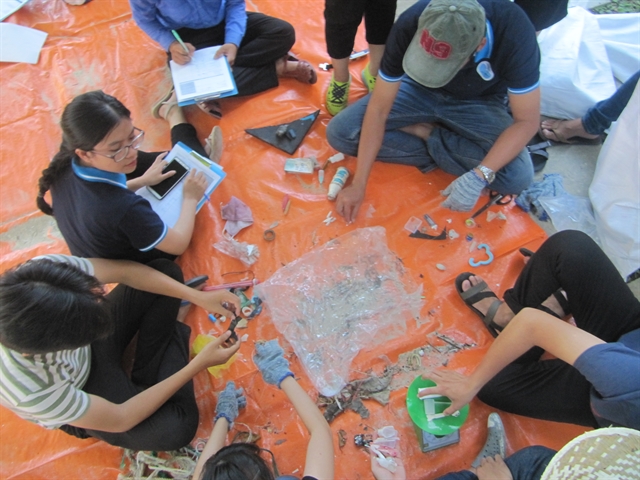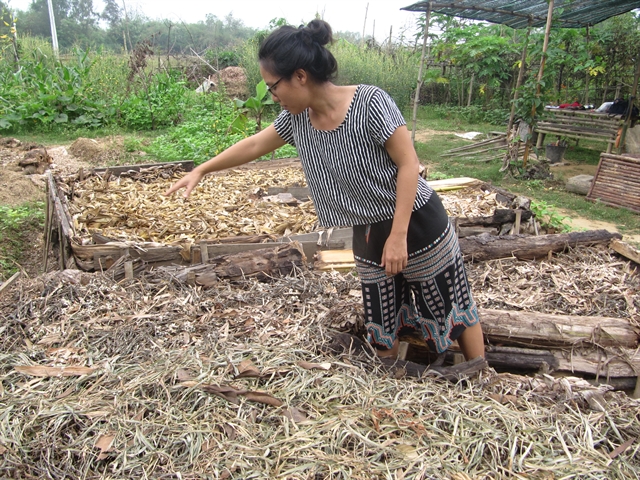A zero-waste model project has been launched in two communes – Cẩm Thanh in Hội An City and Tân Hiệp of the Chàm Islands – to promote waste classification and recycling, and plastic waste reduction and composting among the community.

A waste classification training course is held among the community of the Chàm Islands, off the coast of Hội An. — VNS Photo Công Thành
The project, running from last month to March, 2021 with total funding of more than US$90,000 from USAID’s municipal waste recycling programme via the Global Alliance for Incinerator Alternatives (GAIA), will help residents in the two communes reduce the waste they release daily from 75 to 80 per cent.
Việt Nam, Indonesia, Sri Lanka and the Philippines are the beneficiaries of the USAID project.
GAIA, a worldwide alliance of more than 800 groups, NGOs and individuals in 90 countries, advances community-driven waste solutions through systems change and policy advocacy.
The alliance focuses on promoting zero waste, reducing problematic waste streams like plastic, and putting an end to the burning of waste.
The programme also aims to boost waste classification at source and recycling as well as composting before disposal to a dump.
It also creates a monitoring solution for plastic waste and database for prolonged solid waste management.

Organic waste and leaves are used to compost for plant in a garden in a village near Hội An City. The city focuses on waste reduction from boosting classification, recycling daily waste. — VNS Photo Công Thành
According to the Chàm Islands’ Marine Protected Area management board, the islands population of 2,200 release from 3 to 3.5 tonnes of waste each day, with most of it burnt or sent to a landfill.
Meanwhile, Cẩm Thanh Commune, home to a 140ha nipa palm forest, plays an important role in the Chàm Islands-Hội An world biosphere reserve, as it shelters fish and aquatic species for breeding before moving back to the Chàm Islands.
Cẩm Thanh Commune's more than 2,000 residents still benefit from the wetland forest by earning much for their living from eco-tour service and crafts.
A report from Hội An City’s urban environment unit found the tourism hub produces 100 tonnes of garbage each day, of which 30 per cent is recycled or classified, while a local incinerator can only process 50 tonnes each day.
The Chàm Islands, 20km off the coast of Hội An, are seen as the first site in Việt Nam promoting the successful reduction of plastic bags and 3-Rs (reduce, reuse and recycle) since 2011.
The islands ban all use of plastic bags among local residents and tourists, and a ‘say no to single-use plastic straws and cups’ campaign was launched early this year.